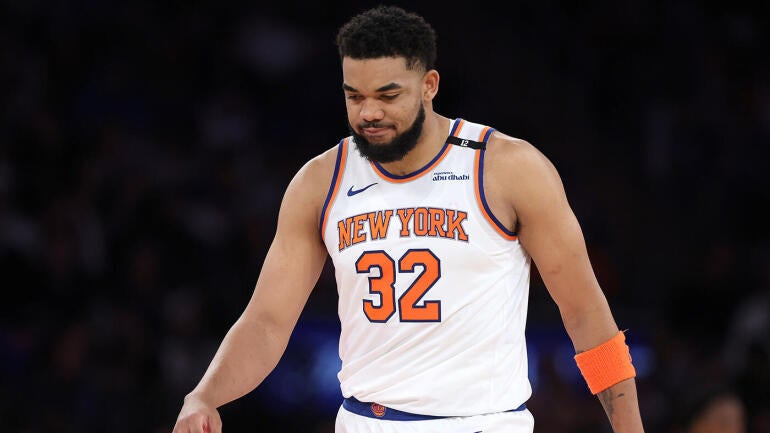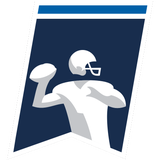

If you want to know why the New York Knicks couldn’t beat the Indiana Pacers in their 125-108 Game 6 loss — or in the Eastern Conference finals in general — you probably have to go back to the summer of 2022. That was when they made their landmark acquisition of Jalen Brunson, of course, but he wasn’t the only significant free agent they signed in that offseason. Using the cap room that remained after signing Brunson, New York also added a little-known backup center named Isaiah Hartenstein on a two-year, $16 million deal.
The structure of that contract was ultimately what doomed New York.
Brunson became the face of the franchise, but Hartenstein was its spine. The Brunson offense, driven by his one-on-one brilliance, was not inherently efficient. New York ranked No. 4 in offense in 2023 and No. 7 in 2024, but fell out of the top 10 in terms of half-court points per play in both seasons. They were buoyed by their dominant offensive rebounding, of which Hartenstein was an essential element.
A side effect of Brunson’s dribbling is that no team consistently takes as many shots at the end of the shot-clock as the Knicks. Hartenstein’s deadly flip shot was a badly-needed safety valve for many aimless possessions. His playmaking kept teammates engaged as Brunson pounded the rock. And, most importantly, he was quite possibly the most underrated defensive player in all of basketball. By Estimated Plus-Minus, he was a top-five defender last season.
Hartenstein was, ultimately, too effective for New York’s own good. The Knicks only signed him to a two-year deal. That meant, as an unrestricted free agent in 2024, they only had Early Bird Rights available to re-sign him, allowing them to offer him no more than a 75% raise on his previous salary — which would have started a new contract at around $16.2 million. The Oklahoma City Thunder wound up paying him $30 million this season to defect from New York. Had the Knicks given him a third year in 2022, they would have had full Bird Rights in 2025 and could have paid anything to keep him. Had they carved out a bit more cap space in 2022, they could have paid him more and increased the maximum raise allowable through Early Bird Rights. They were punished for finding a bargain.
The big swing … and miss?
The role player who made so much of what they did possible was gone, and his running mate at center, Mitchell Robinson, was set to miss most of the regular season due to injury. That put New York in a bind. It had no starting-caliber center going into a season in which it had just invested five first-round picks through the Mikal Bridges trade. So Leon Rose took a swing that fundamentally changed the entire theory of New York’s roster: Julius Randle, Donte DiVincenzo and a first-round pick for Karl-Anthony Towns.
No longer could the Knicks win with grit and defense. This was meant to be a five-out, offensive juggernaut now. It just never quite clicked to the degree they hoped it would. They finally cracked the top-10 in half-court points per play, but without their monstrous offensive rebounding advantage, they ranked only fifth overall offensively, down from the Hartenstein-era peak of No. 4. With opposing defenses mostly ignoring Josh Hart and Tom Thibodeau refusing to change his starting lineup, New York never found the five-out spacing it was built around. The Knicks were good on offense. At times very good. But they were never great.
And they had to be great, because the core problem here, the single major flaw that cost them the Indiana series, was that they could not get stops when both Brunson and Towns were on the floor together, and they weren’t quite explosive enough offensively to get away with that. Below are New York’s lineup numbers from the postseason, accurate through Game 5 of the Pacers series:
| Lineup | Offensive Rating | Defensive Rating | Net Rating |
|---|---|---|---|
|
Brunson and Towns ON |
115.4 |
117.2 |
-1.8 |
|
Brunson ON, Towns OFF |
121.2 |
116.8 |
+4.4 |
|
Brunson OFF, Towns ON |
110 |
98.9 |
+11.1 |
|
Brunson and Towns OFF |
92.6 |
110.6 |
-18 |
The Knicks were predictably terrible without either of their two All-NBA players on the court. When Brunson played without Towns, the offense was great enough to support a weak defense. When Towns played without Brunson, the defense was great enough to support a weak offense.
When they played together, however, a good offense couldn’t bolster a weak defense.
Each of them gives opposing offenses a different sort of target to hunt. As New York started switching more in the later postseason rounds to combat the shooting of Boston and Indiana, aggressive scorers could always find their preferred mismatch. Whether they wanted to attack a guard or a big, one was always available to them.
What moves can be made?
If the Knicks want to win a championship in the near future, they are therefore left with three paths to consider this offseason:
- They can try to improve the surrounding defense enough to survive having two liabilities.
- They can try to improve the surrounding offense enough that it’s so dominant it can survive an underwhelming defense.
- They can break up the Towns-Brunson duo.
New York’s first blockbuster was supposed to set up its second. Part of the appeal of adding Bridges was that it theoretically gave the Knicks a second elite wing defender alongside OG Anunoby, which might have been enough for the Knicks to build a playoff-caliber defense despite their two weak links. But Bridges, a former Defensive Player of the Year runner-up, has slipped significantly since leaving Phoenix. There’s no obvious explanation as to why. He’s only 28 and in good health. Most metrics now paint him as something like an average defender. The concept of surrounding Towns and Brunson with elite wings just didn’t hold up.
There’s a possible internal solution to points No. 1 and No. 2: start Deuce McBride over Hart. Hart is a better help-defender, but McBride provides much more consistent ball-pressure. He’s also grown into at least an above-average shooter on reasonable volume, making nearly 39% of his 3s over the past two seasons. That’s a path to the five-out spacing the Knicks need to jump from good to great offensively. Too often, opponents shut down New York’s offense by putting a wing on Towns and letting their center roam off of Hart as an extra help-defender. This is probably the single biggest reason the Brunson-Towns pick-and-roll never reached the heights the Knicks hoped it would. Hart’s presence just clogged up the paint too much for it to flourish.
But Thibodeau refused to even try it, rolling out the starters with McBride in Hart’s place for only 82 regular-season possessions. The Knicks dominated those possessions in that tiny sample, but when the time came to change his starters in the postseason, he opted for Robinson, not McBride, to replace Hart.
That wasn’t an entirely unjustifiable decision. Robinson was arguably the second-best Knick in the postseason, but given his medical history, his minutes have to be managed cautiously. Starting him makes it easier to manage his workload because it offers more game time with which to find him rest. In Game 2 against Indiana, for example, he played roughly 16 consecutive minutes off of the bench. The Knicks needed him, but without starting him they just didn’t have time to find him breaks. He was predictably gassed by the end of that stretch.
Brunson and Towns have both functioned within good defenses before, and those teams have typically played with two big men. The 2024 Timberwolves had the best defense in the NBA with Towns at power forward and Rudy Gobert at center. The Knicks ranked ninth a season ago with Hartenstein as the primary rim-protector, but plenty of minutes with Julius Randle or Precious Achiuwa alongside him. The idea of starting Robinson is to recreate those formulas: make Towns a power forward again, own the offensive glass as they did with Hartenstein, and find balance between offense and defense.
A Hart-breaking proposition
The playoff results were mostly bad, and the theory raises obvious further questions. Is Towns just a spacer in this alignment? Robinson is not Gobert and Brunson isn’t even Mike Conley. They’re not going to defend as well as the 2024 Timberwolves did. They’re not going to have the five-out spacing that was supposed to make Brunson and Towns an unstoppable pick-and-roll duo.
Maybe there’s work around the fringes that could help here. Anunoby is too important on both ends to get moved, and the Knicks would never be able to realistically recoup what they gave up for Bridges. McBride is so comically cheap for the next two years that giving him up would be downright irresponsible. Is Hart movable? He’s the (metaphorical) heart of the team, but the Celtics moved Marcus Smart and won a championship right afterward. With Hartenstein gone, maybe the Knicks need to divorce themselves fully of the identity they had before the Towns trade. Maybe that means dealing Hart and embracing the future.
A backup point guard to lift those non-Brunson offensive minutes would be a priority if they did. Are the Jazz interested enough in building a culture to swap Collin Sexton for Hart? Lonzo Ball would be great, but he’ll have plenty of suitors and comes with significant health concerns. There just aren’t many point guards in range of Hart’s $18 million salary. Starters make more and backups make less. This might need to be a three-team deal.
What about free agents?
There are free agents out there, but with only the minimum to offer if they hope to duck the second apron, pickings are slim. Could longtime Leon Rose client Chris Paul consider a jump to New York? With his family in Los Angeles, he’s tended to prefer Western Conference teams. D’Angelo Russell isn’t anywhere close to the max player he once was, but he’s not taking a minimum.
I’m going to throw out two names, and you’re probably going to laugh at them: Russell Westbrook and Ben Simmons. One of the benefits of having a shooter like Towns at center is that it opens the door for weak shooters in bench lineups. Maybe Westbrook or Simmons can handle the ball for the 10-12 minutes Brunson rests every night, play some defense, and then skedaddle when the stakes get too high for their deficiencies. They’re interesting innings eaters, but, as their own 2025 postseasons showed, probably can’t be trusted for much more.
What’s frustrating here is that Robinson’s health and Thibodeau’s distaste for experimentation leaves the Knicks in the dark. These are calmer, more measured tweaks, and in a perfect world, they’d have tried some of them across a bigger sample already. They didn’t, and we have to be realistic here: if the Knicks couldn’t beat the Pacers, they had no chance whatsoever against the Thunder. Something drastic might be needed, and given the compressed windows created by the aprons, the Knicks might not be able to wait another year to find out.
Brunson is one of the few players in the NBA, and perhaps the only one not playing for his original team, that could elicit the sort of reaction if traded that former teammate Luka Dončić did. The city of New York would revolt if he was moved, and more than that, he’s practically family to Leon Rose, whose first client as an agent was his father, Rick Brunson. You could maybe talk yourself into a basketball justification for offering Brunson for Giannis Antetokounmpo. Antetokounmpo is better. He and Towns would fit like a glove as a frontcourt duo. Finding a starting-level point guard through trade is usually doable, especially with the wing glut the Knicks would still have. But the off-court implications of dangling Brunson are just too significant to really consider it. If the Brunson-Towns duo is broken up, it is almost certainly Towns going out the door.
The KD question
The first name that’s going to come up here, as he has for so many recently eliminated teams, is Kevin Durant. There was reportedly mutual interest between the two parties at the deadline, and Towns, by virtue of his supermax contract, is the simplest matching salary. He’s also uniquely appealing to the Suns for a simple reason: they have to keep Devin Booker happy. Towns and Booker are college teammates. They are both close friends with Russell, an impending free agent. The three of them did a SLAM Magazine cover in 2019 in which they vowed to play together some day. Now might be their chance.
Does Durant make sense for the Knicks? That’s harder to parse. He doesn’t really get to the basket anymore. You’re trading for him as a shotmaker, and the Knicks already have an elite one in Brunson. In that way, the Knicks would almost be a version of what the Suns were going for, but with a shred of depth, defense and versatility.
Durant is a useful defender, but he’s not a center, and that’s a problem for the Knicks if Towns is heading out. Robinson’s health is enough of a concern that the Knicks absolutely needed another starting-caliber center on the roster as insurance against his absences and to split minutes when he’s healthy. They’d probably have to use the Hart salary slot to find that big man somewhere else. Would the Knicks extend Durant’s expiring contract? They’d almost have to, but paying star-money to a 37-year-old probably shrinks the window meaningfully in apron world. The moment Durant declines is the moment the Knicks are probably out of the championship picture.
It might make more sense to take advantage of Phoenix’s potential interest in Towns to redirect Durant for a few assets elsewhere. Houston and San Antonio obviously have plenty to offer. Other teams have less. Speculating on specifics would be difficult without knowing what his market would be, but the idea here would be to reset a bit, get a little younger, a little deeper and a little cheaper and leave the door open to potentially pivot again when the opportunity presents itself.
The trouble with Towns
Are there other teams that could consider Towns? That’s tricky considering his contract. Finding teams that want to pay supermax money for a center who doesn’t protect the rim is going to be difficult. Maybe there are narrow circumstances in which someone else on the team creates that need. Take the New Orleans Pelicans. To maximize Zion Williamson offensively, they might need a center who shoots a lot of 3s. The Pelicans happen to have a wing glut. Could the Knicks talk Joe Dumars into, say, Herb Jones, CJ McCollum and rookie center Yves Missi for Towns? They could then platoon Robinson and Missi at center. With Jones, Anunoby and Bridges, they really would have the wing defense they dreamed of, and McCollum could given them the bench offense they need when Brunson rests. It’s unclear what the Pelicans are planning, though, so something like this is still purely hypothetical.
Compare the price Towns netted in a trade to the one Bridges got. Towns is the better, more accomplished player, but the fact that Bridges fits onto any roster drove up his value. The Knicks may have overpaid by offering five first-round picks for him, but Memphis had reportedly previously offered four. Versatile wings are so valuable because any team could plausibly use them. Towns is a niche fit. The teams that are interested will likely be very interested, but it’s going to be a narrower field of possible destinations.
That’s the simplest reason not to expect a Towns trade. He’s just less tradable than a player of his stature typically would be. The Knicks can and should keep their ear to the ground. But in all likelihood, the solutions here are going to have to be minor or internal. Whether it’s reorienting the rotation, signing the right minimum contracts or exploring a Hart trade, the goal for next season will probably be to make the Brunson-Towns duo viable in some way. That might mean supercharging the offense or it might mean trying to boost the defense just enough to get by, but neither path is especially clear.
This was what they lost in Hartenstein. Though not a star, he took nothing off of the table offensively or defensively. The Knicks never had to worry about his fit with Brunson or with anyone else. Their new center is more dynamic, but he’s also more vulnerable. That erases their margin for error. They have to get everything around him right if he’s going to take them through four rounds of the postseason. That means perfect roster construction, proper lineup choices and appropriate schematic decisions. If the Knicks do all of that, they can win the 2025-26 championship. But if any part of them fears they can’t? That’s when a Towns trade starts to become far likelier.
This news was originally published on this post .








Be the first to leave a comment